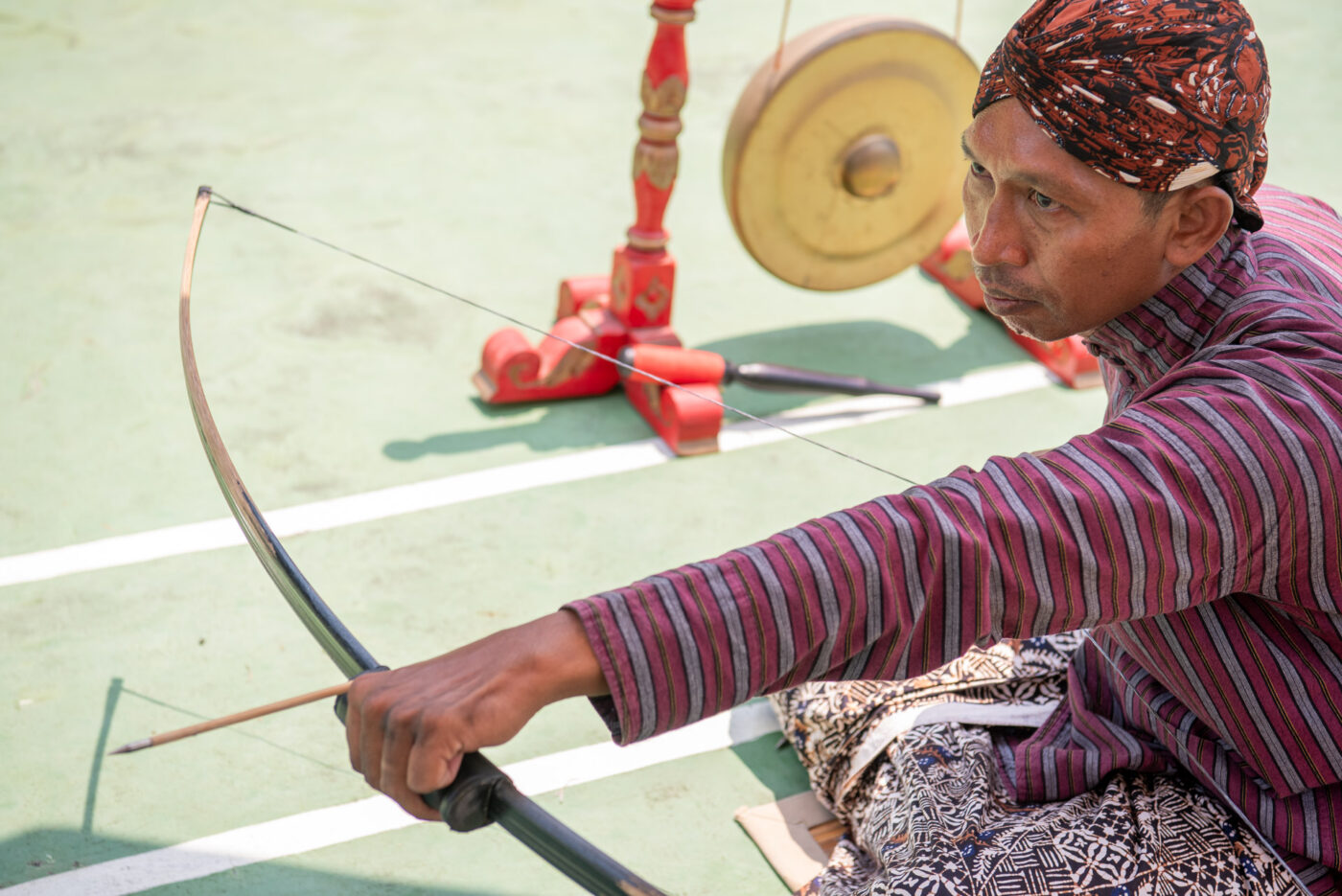Halfway through a jemperingan lesson in the grounds of Central Java’s Amanjiwo, a peculiar thought crosses my mind: is my instructor actually any good?
Every arrow I release veers off course, missing the target – an alarmingly thin slice of faraway wood suspended from a rope – and, curiously enough, my teacher Kris’s arrows follow suit.
Jemparingan, Indonesia’s ancient version of archery, is traditionally performed seated with a horizontal bow rather than standing, adding a layer of complexity to an already challenging discipline.
Doubtful of my instructor’s aim, I request a demonstration of a perfect shot.
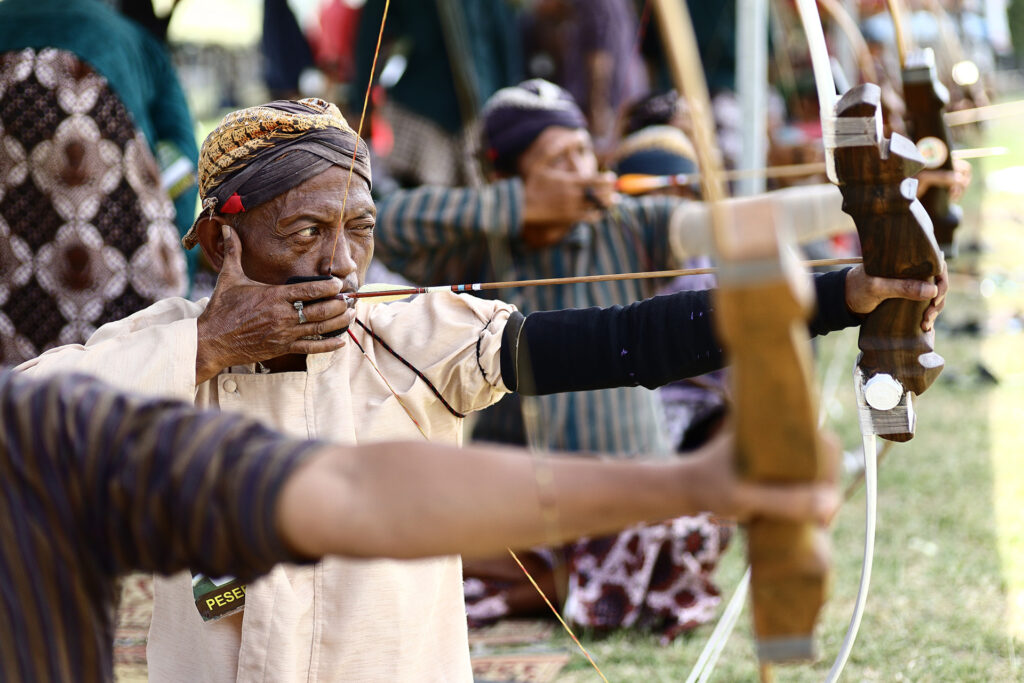
Kris’s response is swift and decisive – an arrow flies from his bow in a smooth trajectory across the tennis court, piercing the red tip of the wood, which symbolises the enemy’s head, scoring the coveted three points.
Kris, it turns out, is a virtuoso of the sport, hailing from a lineage of jemparingan masters who once tutored the royal family.
He continues this legacy, imparting his knowledge of the ancient tradition, a legacy that his three children, all accomplished archers, are set to inherit.
The mystery of his earlier misses unfolds when Kris shares the philosophy behind jemparingan.
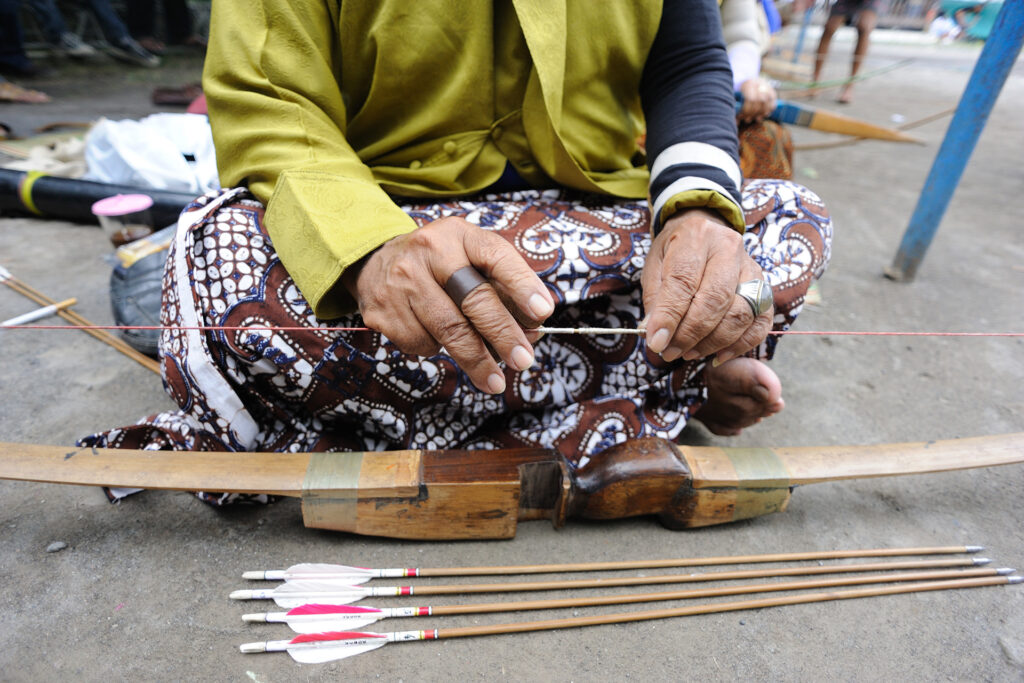
“Jemparingan is not about winning,” he says, “It’s about teaching respect and responsibility.”
In the spirit of jemparingan, when your adversary is faltering – as I decidedly was – tradition dictates to intentionally aim for lesser targets to balance the scales of competition.
It’s an exercise in humility and camaraderie, hitting the main body or the low-scoring hanging ball that – whimsically – represents the enemy’s rear.
Every accurate shot is honored not just with a score, but also with the resonant sound of a gong, accompanied by Kris’s broad, sincere smile.
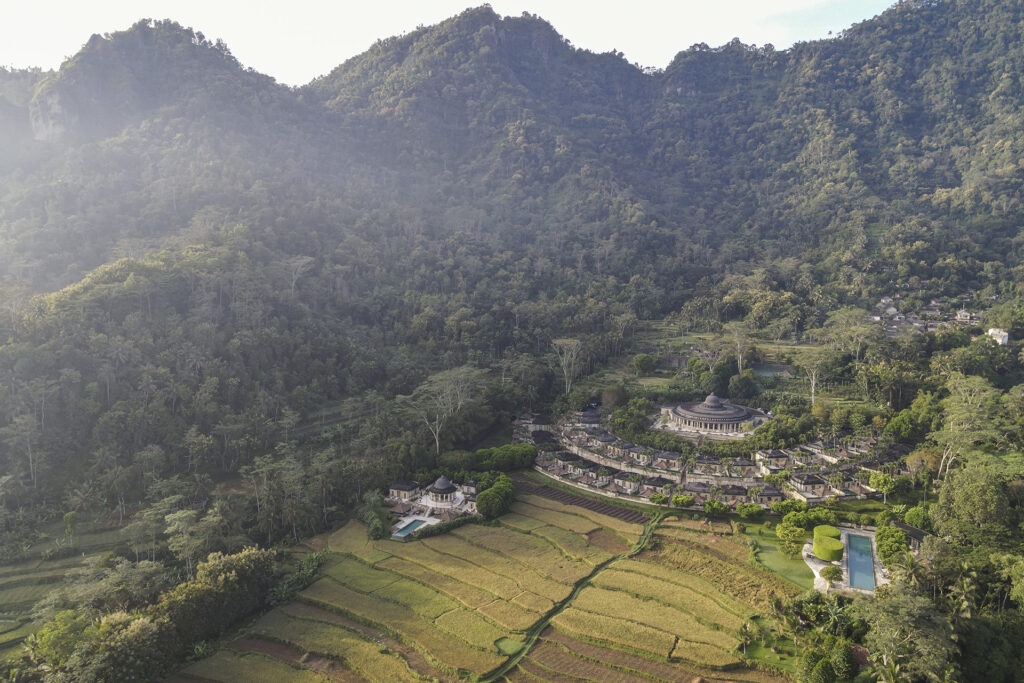
His delight in sharing the heritage of his homeland with visitors from across the globe is as clear as the morning sky.
The history of jemparingan – which means ‘dart’ – is rich and multifaceted, dating back to an era when precision with a bow and arrow was a necessary skill for warriors.
Over centuries, it evolved from a martial practice to a cultural one, symbolizing not just physical dexterity but also mental discipline.
Today, jemparingan is a recreational pursuit, and at Amanjiwo, it’s one infused with luxurious amenities.
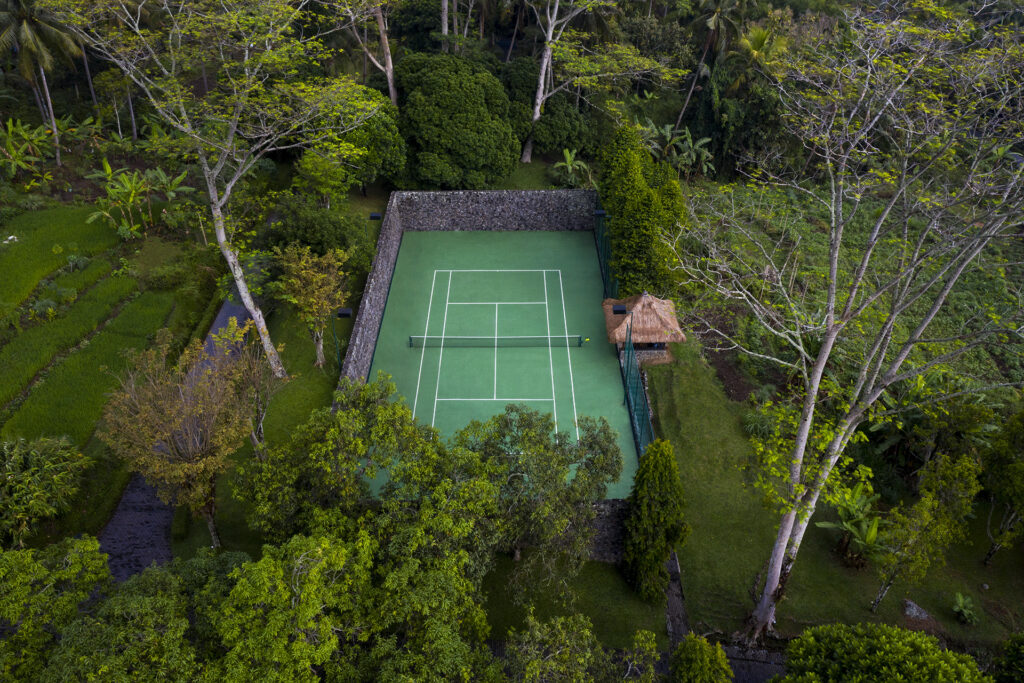
Between rounds, guests are pampered with cold towels, chilled water, and fresh coconuts, all provided by the attentive hotel staff who are ever-present to meet every need.
They double as translators, too, bridging the gap when Kris, fluent in English but occasionally switching to local dialect for intricate historical explanations, delves into the deeper aspects of the sport.
In the shadow of Borobudur, the world’s largest Buddhist temple, jemparingan at Amanjiwo is a true cultural immersion and a testament to the enduring spirit of its practicioners.
It’s here, among whispers of ancient Java, that guests not only learn to aim with a bow but also to align with a philosophy that has steadied and guided generations – respect, humility, and responsibility.
